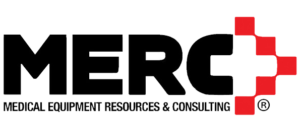Where Does Surplus Medical Equipment Come From?
While not having enough of the equipment you need is an obvious problem, having excess equipment can also be a source of stress.
Not only does holding onto surplus medical equipment take up precious space (you may or may not have), it also puts a significant drain on hospital resources. Put simply, the longer you possess devices you don’t need, the more they will cost your organization.
Obviously, selling at the right time is critical to recovering value. Involving an experienced consulting firm in the process of routine inventory and asset valuations can ensure that your facility or organization are equipped with the up-to-date data needed to make these financial decisions.
But in case you’re wondering – how did we end up with this extra equipment in our care? And where did it come from? – this article is for you. Hospitals, surgery centers, clinics, and other healthcare facilities often find themselves with more equipment than they can manage for several reasons:
Neglected Storage Areas
We have said it before, and we will say it again, hospitals are busy places. There is often a feeling of “there never seem to be enough hours in the day.” This sentiment is no more evident than in the overcrowded storage areas at healthcare facilities. These storage areas are often designated to store back-up equipment or items in need of repair, but quickly turn into “graveyards” that are as mentioned neglected or lacking organization.
Some healthcare organizations even obtain off-site storage areas, paying costly monthly fees to store equipment that often sits and goes unused. This is because it’s unfortunately not uncommon for departments to receive new equipment without devloping a plan for removal of the old. Facilities also take an “out of sight, out of mind” thinking with these storage areas as well. Staff use what is available to them and learn to live with what is available to them and stored assets sit unused. Unfortunately, that equipment often ends up deteriorating and losing substantial value over time.
Updated Technology
Sometimes an administrative and clinical decision is made to switch to a new equipment manufacturer or model. The reasons for this could be many, but it’s generally done in an effort to secure more efficient devices and/or the latest technology. In these instances, there is the replaced equipment that becomes surplus.
Facility Transitions
Moving to a new location? Merging with another practice? Experiencing a change in ownership? Such transitions may include the budget for new equipment and/or facilitate the consolidation of the best pieces. Anything leftover becomes surplus and needs to have a plan for liquidation or removal.
Broken Equipment
Oftentimes, defective devices are set aside for repair, with the best of intentions, only to be forgotten about in the queue of other items. Unfortunately, time is of the essence in such cases where costly repairs cease to be financially beneficial after a the repair cost can exceed the value of the item itself or the financial benefit of purchasing a new, more reliable replacement.
As you can see, there is rarely intention to have large quantities of surplus equipment within an organiztion for an inordinate amount of time. It’s simply a common happening as a result of the dynamics of the healthcare industry and culture.
Again, this is why it’s crucial to conduct regular equipment inventories – ideally once every three years. If you are currently finding yourself sitting on a large amount of surplus equipment, here are the steps to take:
Phase 1: Inventory and assess the assets and determine their value and utilization.
Phase 2: Determine whether or not it’s possible to recover value.
Phase 3: Develop a plan for liquidation.
Obviously, there are many small steps involved within each phase. Much of the value you could potentially receive from liquidation is dependent upon the type of transaction taking place. Several variables must be analyzed and understood before an ideal plan for equipment removal can be put in place.
Our personal expertise, market research methods and proprietary database allows us to make customized recommendations for surplus equipment that is in your best interest. Let us help you take care of the details so you can get back to doing what you do best.

